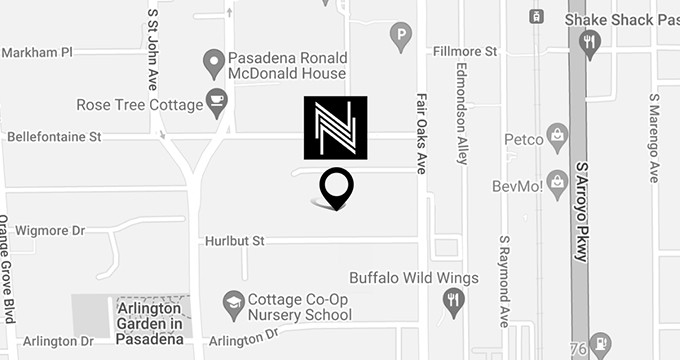
Recovering from a tummy tuck, or abdominoplasty, involves several important steps to ensure optimal healing and results. One crucial aspect that is often overlooked is the importance of proper sleeping positions post-surgery. While many patients are eager to return to their normal routines, including their preferred sleeping positions, understanding when and how to transition to side sleeping can significantly impact the recovery process.
This article delves into the details of post-tummy tuck sleep guidelines, offering insights and tips to help you achieve a smooth and comfortable recovery that is seldom discussed by other experts.
Understanding the Tummy Tuck Procedure
A tummy tuck, or abdominoplasty, is a surgical procedure designed to remove excess skin and fat from the abdomen while tightening the underlying muscles. This procedure is often sought by individuals who have experienced significant weight loss or by women post-pregnancy to restore a firmer, more toned abdominal profile.
What is a Tummy Tuck?
During a tummy tuck, the surgeon makes an incision along the lower abdomen, typically from hip to hip. Excess skin and fat are removed. By doing this the abdominal muscles are tightened to create a smoother, firmer appearance. The remaining skin is then repositioned and the incision is closed with sutures. This procedure can dramatically improve the abdominal contour but requires a careful and monitored recovery process.
The Initial Recovery Phase
The initial recovery phase after a tummy tuck is critical for proper healing. Patients may experience swelling, bruising, and discomfort, which are managed with prescribed medications and proper care. During this time, maintaining the right sleeping position is vital to avoid putting unnecessary strain on the incision and to promote optimal healing. Patients are usually advised to sleep on their back, slightly elevated, to minimize tension on the abdomen and reduce swelling.
Recommended Sleeping Positions Post-Tummy Tuck
Proper sleeping positions are crucial for a smooth recovery after a tummy tuck. These positions help minimize discomfort, reduce swelling, and prevent strain on the surgical area, promoting better healing.
Sleeping on Your Back
Initially, sleeping on your back is the most recommended position post-tummy tuck. This position helps to avoid pressure on the abdominal area, which can otherwise cause discomfort and potentially affect the healing process. Elevating your upper body slightly, either with pillows or by using an adjustable bed, can further reduce swelling and improve comfort. This elevation helps to keep the torso in a slightly bent position, which reduces tension on the incision and supports proper healing.
Using Pillows for Support
Using pillows strategically can enhance your comfort and support proper sleeping positions. Placing pillows under your knees can help maintain a slight bend in the hips, which reduces stress on the abdominal muscles. Additionally, surrounding yourself with pillows can prevent you from rolling over in your sleep, ensuring you maintain a safe position throughout the night. Some patients find that a body pillow or wedge pillow can provide the necessary support and help maintain the recommended sleeping posture. These aids not only improve comfort but also contribute to a faster and more effective recovery process by maintaining proper alignment and reducing movement during sleep.
Transitioning to Side Sleeping
Transitioning to side sleeping after a tummy tuck should be approached with caution and patience. While sleeping on your back is recommended during the initial recovery phase, most patients can gradually shift to side sleeping as their healing progresses.
Timeline for Side Sleeping
The general timeline for transitioning to side sleeping varies among individuals, but most patients can start considering this change about four to six weeks post-surgery. It is crucial to follow your surgeon’s advice, as they will assess your specific healing process and provide personalized recommendations.
How to Safely Transition to Side Sleeping
When transitioning to side sleeping, start by using pillows to support your body and reduce strain on the abdomen. Place a pillow between your knees to align your hips and another under your abdomen for additional support. Gradually increase the time spent in this position each night, ensuring it does not cause discomfort or stress on your incision. Monitoring your body’s response and consulting with your surgeon will help you safely transition to side sleeping.
Tips for Comfortable and Safe Sleep
Ensuring a comfortable and safe sleeping environment is essential for a smooth recovery after a tummy tuck. Here are some practical tips to help you achieve restful sleep while supporting your healing process.
Maintaining Proper Posture
Maintaining proper posture while sleeping is crucial to avoid strain on your abdomen and to support healing. Here are some tips:
- Elevate Your Upper Body: Use pillows or an adjustable bed to keep your upper body elevated, reducing tension on your incision.
- Bend at the Hips: Place a pillow under your knees to keep them slightly bent, which helps reduce abdominal strain.
- Use a Recliner: Consider sleeping in a recliner during the initial recovery phase to maintain a proper posture and prevent rolling.
Using Sleep Aids
Various sleep aids can enhance your comfort and ensure you maintain a safe sleeping position:
- Body Pillows: These can provide full-body support and prevent you from rolling over in your sleep.
- Wedge Pillows: These help keep your upper body elevated and maintain the recommended sleeping position.
- Extra Cushions: Surround yourself with cushions to support your body and maintain a comfortable, stable position.
Creating a Restful Environment
Creating a restful environment can promote better sleep quality and aid in your recovery:
- Keep Your Room Cool and Dark: A cool, dark room can help you fall asleep faster and stay asleep longer.
- Establish a Routine: Develop a bedtime routine to signal your body that it’s time to rest.
- Limit Distractions: Avoid screens and other distractions before bedtime to ensure a peaceful sleep environment.
By following these tips, you can enhance your comfort and support your body’s healing process, ensuring a smoother recovery after your tummy tuck.
Common Concerns and FAQs
Recovering from a tummy tuck can raise several concerns and questions. Here are some common issues and frequently asked questions to help guide you through your recovery process.
Dealing with Discomfort
Q: What should I do if I experience discomfort while sleeping?
A: It’s common to feel some discomfort during the initial recovery phase. To manage this, ensure you are following your surgeon’s pain management plan, which may include prescribed medications. Using extra pillows to support your body and maintaining the recommended sleeping positions can also help alleviate discomfort.
Q: Is it normal to have trouble sleeping after a tummy tuck?
A: Yes, difficulty sleeping is normal due to discomfort and adjusting to new sleeping positions. Establishing a calming bedtime routine and creating a restful environment can improve sleep quality.
Monitoring Your Recovery
Q: How can I tell if my recovery is on track?
A: Regular follow-up appointments with your surgeon are crucial for monitoring your recovery. Keep an eye on your incision site for signs of infection, such as increased redness, swelling, or discharge, and report any concerns to your surgeon immediately.
Q: When should I be able to return to my normal sleeping positions?
A: Most patients can start transitioning back to their normal sleeping positions around six weeks post-surgery, but it’s important to follow your surgeon’s advice based on your specific healing progress.
Conclusion
Proper sleep positions are crucial for a smooth recovery after a tummy tuck. By understanding when and how to transition to side sleeping, you can enhance your comfort and support your healing process. Always follow your surgeon’s guidelines and take steps to create a restful sleep environment.
If you have any questions or need personalized advice, call Dr. Nima Plastic Surgery at (626) 696-8181 or visit us to schedule a consultation.


